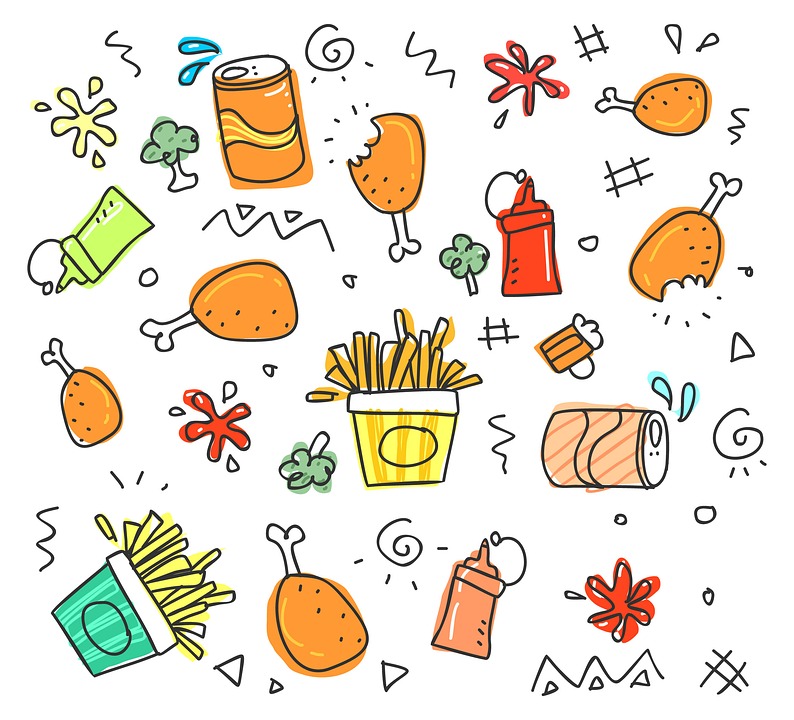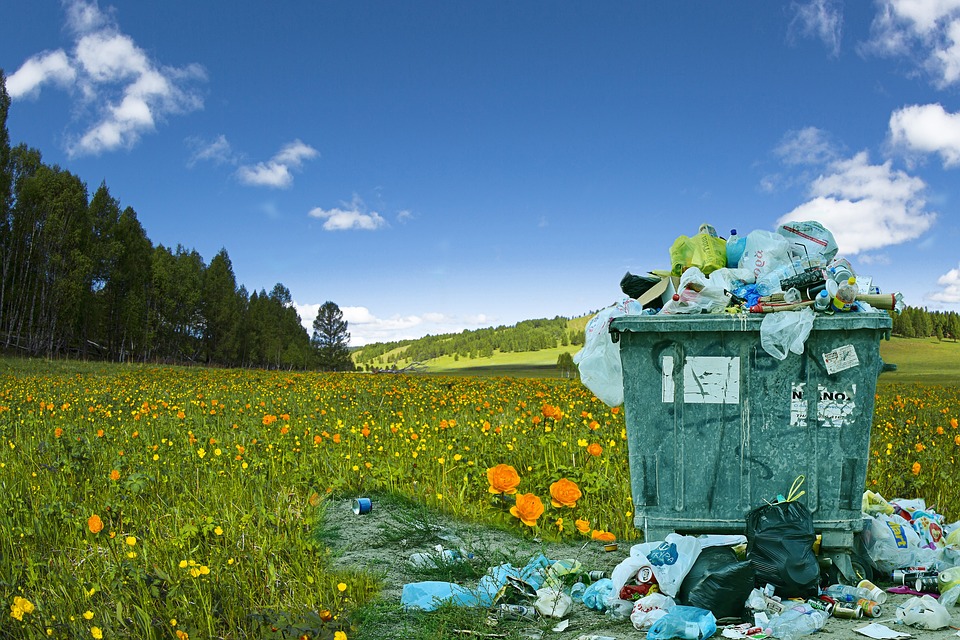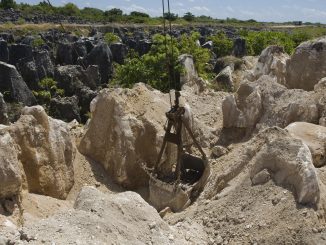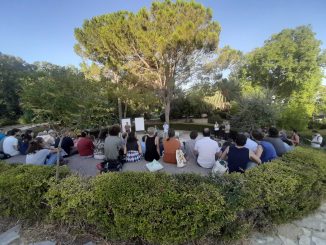
“We cannot live without soil-regenerating mixed-farming, livestock inclusive”. This will be controversial for some but only to those who are single-issue focused. To create a sustainable food system is complex as it is about finding the best fit to resolve many issues, even if in doing so we do not find the perfect answer to any one of them. Focusing on soil-regeneration as the catch-all will, however deliver a multitude of benefits. These ideas have been introduced in part five of the #soilmatters series, and is explored fully in a longer three part document called Soil, Farming and Society: support mechanisms for the necessary transition. Below is part one of the three parter.
1. Reducing the GHG emissions from producing our food

As eating is a day-to-day necessity, is there an acceptable level of GHG emissions from food systems? With so many humans living within urban conurbations it is unlikely that food-system emissions will ever be zero. It may be feasible to minimize production emissions but there is still processing, packaging, transportation and distribution to consider; all necessary when taking food from rural to urban areas. Carbon-neutral farming must, at least, be a goal.
Transporting food creates nutrient flows that are rarely closed cycles as little human waste is returned to the land from which the food was sourced. The same goes for when we locate farm animals close to human urbanizations: the farm ‘waste’ occurs far from the place where the animals’ feed, which is usually grain but there are major movements of fodder too. Whereas weeds may be plants in the wrong place, nutrients so become pollutants. As a society we pay to replace nutrients lost from the production location and to handle the various pollutants created elsewhere.
We have mined nutrients for years as we have broken cycles; but as with carbon loss from soils, such is no longer an option. With nitrogen it has been artificial nitrogen fertilizers that have allowed humans, their pets and disconnected farm animals, to live lives independent of the soils that produce their foods. With carbon, it has been through the exploitation of fertility [as soil organic matter] built up in the soils over millennia under forests or native grasslands; the latter being grazed by equally native fauna. Urbanization is fact, so we now must seek to sustainably feed populations living in ‘unsustainable’ locations.
There is a heavy fossil fuel cost associated with nutrient replacement into food production systems, not least with the Haber-Bosch process. Thankfully, much is being done to get smart with the production and application of nitrogen fertilisers. Their use, however, does little to rebuild the organic matter in soils, often so depleted by continuous plant cropping.
It is also time we asked – just how detrimental an impact does artificial nitrogen have on the functioning of the soil biome?
Realistically, the only low GHG emissions mechanisms to replenishing organic matter and nutrients is by using legumes to fix atmospheric nitrogen and to return composts and ‘processed’ manure to the soils. Given urbanization, compost-based recycling opportunities are very limited. Hence, it is only through managed grasslands and forests that we can rebuild secure, robust food systems founded again upon fertile, healthy soils. The bonus is, of course, that in restoring our soils we also return carbon from whence much of it came.
For those approaching the issue one-dimensionally as per, say, GHG or promoting plant-only diets, it may be difficult to grasp, but we can only approach carbon neutrality through the following process: judiciously using livestock raised on forages supplemented by locally-sourced feeds and food-processing by-products to produce nutrient dense foods that can be efficiently transported from rural food-producing areas to urban, food-consuming areas. Sustainable feeding urbanized humans and their pets is difficult enough, but we have exacerbated the issue by also ‘urbanizing’ too many farm animals.
Methane is, nonetheless, a major GHG problem and that must be reduced, captured and utilized as a fuel, or its carbon recycled within the farming system. Methane is a part of the process by which some indigestible-by-humans plants are converted to digestible foods [by ruminants], not least in environments unsuited to the growing of crops that can be directly utilized by humans. When methane is necessarily produced, we must ensure that the farming system is designed to cycle carbon back into the soil efficiently and effectively.
If, as more farmers are coming to believe, carbon can be effectively sequestered into soils while rebuilding organic matter, we must encourage farmers to do so. Meanwhile they must grow crops, be they rotated or permanent, food or forages, to minimize carbon losses. Grazing livestock, which predominately means ruminants, are going to be vital to these systems. We must not, however, in the pursuit of GHG reductions in isolation, look to plant-only diets as our soils will not sustain them.
Better nutrition and health and lower healthcare costs
What we eat and what we are recommended to eat has a major impact upon our environment. ‘Eat less meat’ is an increasingly common statement. However, ‘eat less meat and dairy but of better quality’ may be the statement that results in a more resilient food system. That’s f by ‘better’, we mean animal-derived products that are sourced from farming systems that regenerate soils.
There have been many nutritional messages provided by governments over several decades, but there is rising controversy over what constitutes a healthy diet. With so many eating-related disorders around, further dietary guideline change is almost inevitable. Creating a sustainable food system when such flux exists is not easy. If it is to be evidence-based, it may be the case that we are still years away from even having a technically-sound starting point.
Fats are a necessary part of a diet. All fats are, nonetheless not equal, and, over the years, people have been recommended to consumer different fats. At its simplest, it has been about moving away from consuming animal fats to vegetable fats. One result has been the massive expansion in palm oil production, a crop associated with massive tropical forest deforestation and extinction risks for numerous species reliant upon such habitat – unforeseen but definitive consequences.
Many people would like to consume quality plant-derived fats like those from olive or avocado, but severe production limitations mean that their availability and affordability is limited [nuts are widely seen as nutritionally positive, but the same applies]. Can we all live on beans? Maybe, but we must look closely at the environmental costs of vast-scale, mono-cultured beans; albeit many of the costs are attributable to producing proteins for pigs and poultry rather than directly consumed beans.
We frequently see chicken promoted as the healthiest of meats [as it is low in fat]. Thus chicken [and pork] consumption has risen sharply [also helped by industrialisation driving down costs]. The availability and cost of chicken meat has been possible due to the expansion in soybean production in South America. This has happened at the expense of savannah and the Pampas grasslands [not to mention the chickens]. Apart from habitat destruction, monocultured soybean has released carbon from what were previously long-term carbon stores; a recent example of what long-since happened in northern hemisphere, temperate grasslands. Again, unforeseen but definitive consequences.
Obesity and its associated illnesses has become rampant. It is placing massive pressures upon health service budgets around the world. Of course, that means greater scrutiny is being placed upon what we eat, in lifestyles and nutritional guidelines. A common response has been the promotion of plant-based diets. It is assumed that they are both healthier and more sustainable – but are they? If one factors in the necessity to regenerate soils, that have often been depleted by continual plant production, questions should be asked about the actual sustainability of plant-only diets.
The finger is increasingly pointed at sugar. It is also pointed at fats. If, however, one considers that all highly refined carbohydrates swiftly convert to glucose and should be considered as ‘sugar’ one wonders where our energy will come from. Fruit juices are now seen as a concentrated source of sugar but how long will it be before potatoes, bread, pasta and rice are added to the list? Wholemeal versions may be better from a fibre perspective, but they still have a high glycaemic index and will look less healthy if the focus switches to eating lower GI foods. And when the focus does change, it will turn the whole ‘what is a sustainable diet’ conundrum on its head.
As dietary management focuses on managing blood sugars and the avoiding of blood sugar spikes within normal eating patterns, dietary recommendations will change again. It appears that the human system can handle high, multiple-times-a-day, blood sugar surges for less than a handful of decades until a rising inability to do so triggers numerous health issues. Few are likely to escape the consequences of excess blood-sugar loading. Exercise may help but not if it is being fuelled by the over-consumption of the ‘easy-sugars’ complex of foods.
Often overlooked is the impact of frequent ‘hunger’ during the day and there is an associated link. Foods that leads to being sated, will become a key aspect of fighting obesity. Counting calories will not help if those calories still trigger significant blood-sugar fluctuations and, thus hunger.
The combination of the above will change our approach to foods and it will emphasis nutrient dense, lower GI foods over high-GI carbs. They will be plant based and animal derived and focusing on their production will change perceptions of what is now considered sustainable food production. As we move away from a diet where the calorific ‘weight’ comes from high-GI carbohydrates, the focus will fall upon high-quality fats and proteins from both plants and animal sources.
If one is to predict what a sustainable diet is going to look like in 10 or 20 years’ time one would suggest that it will be about low-GI carbohydrates, with the emphasis on vegetables, plant-derived proteins and fats and a more selective approach to animal-derived proteins and fats. For the latter, it will be about nutritionally higher quality products from pasture-based systems that use minimal quantities of ‘imported’ grains. One’s expectation is that there will be an increasing evidence base that animal-products derived from animals that graze diverse pastures [as opposed to just having access to outdoors ‘free-range’ space] will provide healthier sources of fats and proteins.
For the last half a century we have endured all sorts of nutritional guidance. This has meant, for example, that eggs have been good, then very bad and now good again. Another is that we have gone from butter to margarine and back. Certain animal’s fats are now in vogue [although there are those who argue that they shouldn’t be]. For some, red meats are an invaluable food source that has been falsely maligned and that ‘red meat’ is a term that encompasses the good, the bad and the ugly. They, along with a selected class of ‘better’ animal fats will be an important part of human nutrition going forwards; we just need to be far clearer in our understanding of their qualities.
Perversely to many, the cropland freed up from grain production for animal feeds should not be used for more human-consumption crops; it must be grazed by livestock within rotational farming systems. The rationale here is that a sustainable diet can only be followed if its foods are derived from sustainable, soil-fertility-maintaining farming; and that means keeping pasture-living animals. If that is indeed to be the case, we need to recognize that a sustainable diet and, hence, food system must be built from the ground up, or more literally, the soils up. There is no alternative.
3 Reducing the pollution from our food production systems
Is there a direct correlation between the separation of animal farming away from the soils that grow their feeds and forages? Is this responsible for a wide array of the pollutions attributable to human food production? As we have pursued means to supply large, urban populations with affordable animal-derived fats and proteins, has pollution become inevitable? Are we now deluding ourselves by ignoring externalities and the true cost?
Not only does geographically separating feed and forage production from farm animals incur transport costs, it also means that nutrients end up in the wrong place. As a plant in the wrong place can be called a weed, a nutrient in the wrong place can become a pollutant. Leaching from a broken cycle can be into the atmosphere and into the waterways. The ‘dead zone’ in the Gulf of Mexico is a case in point. Many others of lesser magnitude certainly occur around the globe. When it comes to our marine and fresh water environments, drinking water inclusive, at what point will nitrates become the next ‘plastics’? It will happen, and it will have a massive impact upon food production. And it will not just be about leakage from large-scale animal-confinement farms, it will be about emissions from spreading manures, slurries and artificial fertilisers.
An issue that one is still to hear much about is how these nutrient-rich farming wastes, sometimes more rightfully called fertilisers, and artificial fertilisers impact upon the health of the myriad of organisms that reside in our soils. We are short of knowledge about the importance of such life to crop production and we are as equally at a loss when it comes to understanding the impact that manures, slurries and fertilisers have on soil health. We are probably still treading a fine line between fertilising our crops and polluting the environment of a myriad of invaluable organisms.
Are we guilty of assuming that all manures and slurry applications are beneficial? Are we only looking upon them as vital nutrients to feed crop plants? Do we forsake the health of all other organisms in the pursuit of fertilizing our crops? Do our dosages of ‘artificial’ inhibit natural mechanisms from providing for crop growth? Yes, we are getting smarter in their use, and their rising cost will only encourage us to do so further, but how strong is the correlation between our reliance over the last sixty years on ‘artificials’ and the decline in our soil fauna and, hence, soils?
Taking it one step further, many farmers are being encouraged to inject slurry into soils to minimize GHG emissions. Investing in equipment is often cited as an example of ‘smart’ agriculture and a way that food production can reduce its GHG footprint. In some circumstances, the tax payer is even funding the low-emissions equipment used. In the natural environment, most animals ‘wastes’ are discarded upon the surface and nature has mechanisms to process them, they are not injected below the surface. Are we, therefore, injecting untreated animal wastes into our soils without considering the impact it will/may have upon the soil biome? Is this another case of not joining the dots and spotting the unforeseen consequence? Are we blissfully unaware that we are polluting another environment, albeit one that we too often consider to be inert?
Rebuilding our soils must be about recycling nutrients to our soils in a fashion that is beneficial to soil health. We must do in way that minimizes nutrient/pollutant leakage and in a fashion that minimizes the costs of transporting nutrients and/or replacing those that have been lost from our food-production localities. At the centre of all is the choice of food production system and how well it can mimic the natural cycle of nutrient harvest and return. When people talk about carbon-neutral food production, it is these systems that we must aspire to, but what are they? Sadly, it is a journey upon which mainstream ‘conventional’ agriculture has hardly started out on.
Although some are against animal farming on principle, grazed animals are vital components to sustainable food systems. Realistically, mega-scale composting aside, grazing animals are vital to nutrient recycling. Further, they are vital to returning carbon and organic matter to soils on a broad-scale. There is just no other solution. It is far easier to mimic the natural cycles with them than without them. It is such systems, allied to nitrogen-fixing legumes [to GHG-effectively recycle nitrogen lost in human foods back to cropland via the atmosphere], that will allow a move towards farming systems that are carbon neutral and soil benefiting.
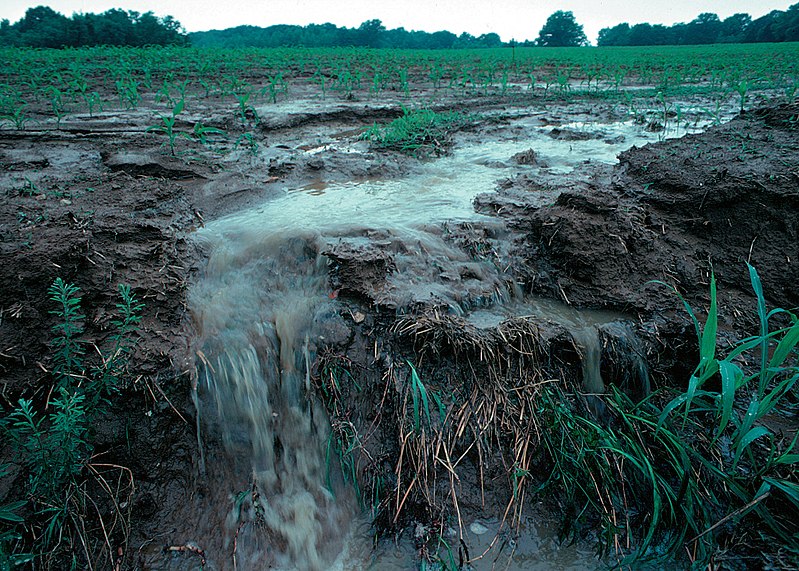
As a footnote, this is not about using ‘grass-based’ livestock systems, it is about managing multi-species swards (See article below). It is also about adopting specific grazing practices that focus upon soil health and returning carbon and organic matter to soils. It will be about very careful use of externally-sourced nutrients, be they artificials or animal ‘wastes’ from winter housing. Within crop rotations, it will be about building fertility that can be later harvested from human-food crops. It will be about reducing carbon loss from excessive cultivations. Where pastures are permanent, it will be about maintaining permanency and not regularly reseeding swards, exhausted by successive and excessive defoliation.
Finally, in the context of total food systems, fossil fuel usage must be increasingly scrutinized. From a dietary perspective, nutrient dense foods will become the preferred choice, not least to stave off the constant obesity-causing, Type-2 diabetes-inducing hunger that comes with high-GI-carbohydrate dependency, but their production must not be at the expense of polluting our air, water and soils. Such nutrient-dense foods must not, however, come from ‘out-of-a-natural-context’, large-scale, confined-animal systems. We must focus upon minimizing the footprint from transporting nutrient dense food products from where they can be most ‘naturally’ produced to urbanizations. Our current system of placing farm animals in convenient, intermediate, ‘financially-efficient’ locations creates far too many polluting externalities and it must change.
Now read the entire thing! Soil, Farming and Society: support mechanisms for the necessary transition (pdf)
Below are all articles in the soil series #SoilMatters
#SoilMatters part 7 | Soil, Farming and Society: support mechanisms for the necessary transition
#SoilMatters part 6 | What do we want of our soil? And how do we get it?
#SoilMatters Part 5 | Stuart Meikle on Soil, Ruminants & Sustainable Food
#SoilMatters part 4 | What do we really lose, when we change how land is used?
#SoilMatters Part 3 | Soil, Carbon and Policy – where now for 4p1000?
#SoilMatters part 2 | Mario Catizzone and Sustainable Soil Management
#SoilMatters | Part 1: Andrea Beste on humus, soil structures & the limits of no-till

